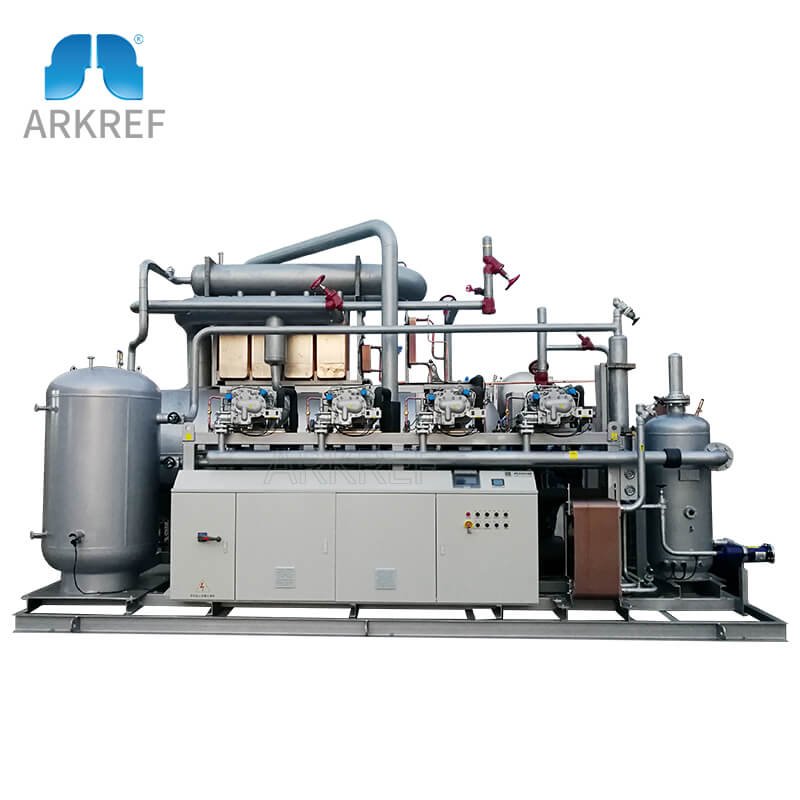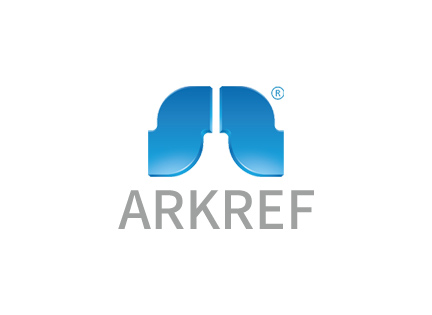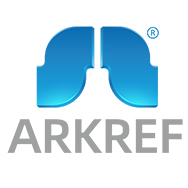Implementing ARKREF CO₂ Transcritical Refrigeration Unit: A Cost-Effective Guide for Industries

Understanding ARKREF CO₂ Transcritical Refrigeration
What is Transcritical Refrigeration?
Transcritical refrigeration is an innovative cooling technology that operates above the critical point of the refrigerant, where it undergoes both liquid and gas phase changes. This unique process allows for efficient heat transfer and is particularly well-suited for industrial cooling applications.
Basics of Transcritical Cycle
In a transcritical cycle, the refrigerant undergoes a continuous transition between its liquid and gas phases, enabling effective heat exchange within the system. This cycle plays a crucial role in maintaining optimal cooling performance, especially in high-temperature environments.
Role of CO₂ in Transcritical Systems
CO₂ serves as the primary refrigerant in transcritical systems due to its favorable thermodynamic properties. Its ability to operate efficiently at high pressures and temperatures makes it an ideal choice for industrial refrigeration, ensuring reliable and consistent cooling processes.
Why Choose ARKREF Units?
When considering refrigeration solutions for industrial purposes, ARKREF units stand out as a top choice due to their exceptional design and efficiency.
Design and Efficiency
ARKREF units are meticulously designed to optimize energy usage while maintaining superior cooling performance. Their advanced engineering ensures minimal energy wastage, making them a cost-effective and environmentally friendly option for industrial refrigeration needs.
Compatibility with Industry Standards
Another compelling reason to choose ARKREF units is their seamless integration with industry standards. These units are designed to meet the specific requirements of various industrial sectors, providing reliable and compliant refrigeration solutions.
The Environmental and Economic Benefits of CO₂ in Refrigeration
As industries continue to prioritize sustainable practices, the environmental and economic benefits of CO₂ in refrigeration have become increasingly significant.
Environmental Impact of CO₂ Refrigeration
Low Global Warming Potential
One of the key environmental advantages of CO₂ refrigeration is its remarkably low global warming potential. Unlike traditional refrigerants that contribute to ozone depletion and global warming, CO₂ operates with minimal impact on the environment. This makes it a responsible choice for industries aiming to reduce their carbon footprint.
Sustainability Factors
The use of CO₂ in refrigeration aligns with sustainability goals due to its natural abundance and non-toxic properties. As a naturally occurring substance, CO₂ minimizes the reliance on synthetic chemicals, promoting a more environmentally friendly approach to industrial cooling processes.
Economic Advantages for Industries
Energy Efficiency and Cost Savings
Implementing CO₂ refrigeration systems offers substantial energy efficiency, leading to significant cost savings for industries. The inherent thermodynamic properties of CO₂ enable efficient heat transfer, reducing overall energy consumption and operational expenses. This translates into long-term financial benefits for businesses seeking sustainable and economical cooling solutions.
Long-term Investment Benefits
Choosing CO₂ refrigeration technology represents a prudent long-term investment for industries. With an extended equipment lifespan and lower maintenance requirements compared to traditional systems, CO₂ refrigeration units offer enhanced durability and reliability. This results in reduced lifecycle costs and increased return on investment over time.
Steps to Implementing ARKREF CO₂ Transcritical Refrigeration Units
Implementing ARKREF CO₂ transcritical refrigeration units involves a systematic approach to ensure seamless integration and optimal performance within industrial settings.
Initial Assessment and Planning
Before embarking on the implementation of ARKREF CO₂ transcritical refrigeration units, conducting a comprehensive initial assessment is crucial to determine the specific requirements and feasibility within the industry.
Evaluating Industry Needs
The first step in this process is to evaluate the unique cooling demands of the industry. This includes assessing the required cooling capacity, temperature ranges, and any specialized cooling needs that may exist. Understanding these specific requirements is essential for selecting the most suitable ARKREF unit tailored to the industry's distinct refrigeration needs.
Consulting with Experts
Seeking guidance from refrigeration experts and specialists in CO₂ transcritical systems is imperative during the planning phase. Their expertise can provide valuable insights into identifying potential challenges, optimizing system design, and ensuring compliance with industry standards. Collaborating with experts also facilitates the development of a customized implementation plan aligned with best practices and technological advancements in transcritical refrigeration.
Installation and Setup
Once the initial assessment and planning phase are complete, attention turns to the meticulous installation and setup of ARKREF CO₂ transcritical refrigeration units.
Preparing the Site
Preparing the site for installation involves creating an environment conducive to accommodating the ARKREF unit. This includes ensuring adequate space, ventilation, and infrastructure readiness to support the efficient operation of the system. Additionally, any necessary structural modifications or reinforcements should be addressed at this stage to facilitate a smooth installation process.
Integration with Existing Systems
Integrating ARKREF CO₂ transcritical refrigeration units with existing systems requires careful coordination and compatibility assessments. Seamless integration ensures that the new system operates harmoniously with pre-existing infrastructure, minimizing disruptions and optimizing overall operational efficiency. Thorough testing and validation procedures are essential to confirm successful integration before full deployment.
Training and Maintenance
Following installation, providing comprehensive training for staff members responsible for operating and maintaining ARKREF CO₂ transcritical refrigeration units is essential for long-term success.
Educating Staff on Operations
Educating staff on system operations encompasses thorough training on monitoring equipment performance, responding to alarms or alerts, adjusting settings as needed, and adhering to safety protocols. Properly trained personnel play a pivotal role in maximizing system efficiency while ensuring safe operation throughout its lifecycle.
Regular Maintenance Tips
Establishing proactive maintenance practices is critical for preserving the longevity and performance of ARKREF CO₂ transcritical refrigeration units. Regular maintenance tips include scheduled inspections, cleaning procedures, component lubrication, leak detection measures, and adherence to manufacturer-recommended service intervals. By implementing these maintenance best practices, industries can uphold peak performance levels while minimizing downtime due to unexpected malfunctions or failures.
Real-World Applications and Success Stories
Case Studies of ARKREF CO₂ Transcritical Refrigeration in Action
In real-world industrial settings, the application of transcritical refrigeration technology has yielded remarkable success stories, particularly with the integration of ARKREF units.
Food Industry Success
The utilization of transcritical refrigeration systems, specifically incorporating ARKREF units, has revolutionized cooling processes within the food industry. By leveraging the advanced capabilities of these units, food storage facilities have achieved unprecedented levels of temperature control and energy efficiency. The seamless operation of ARKREF units in transcritical refrigeration has not only ensured optimal preservation of perishable goods but has also significantly reduced operational costs for food businesses.
Pharmaceutical Industry Efficiency
The pharmaceutical sector has experienced substantial improvements in refrigeration operations through the adoption of transcritical refrigeration, with a focus on integrating cutting-edge ARKREF units. The stringent temperature requirements for pharmaceutical storage and distribution have been met with precision and reliability, thanks to the exceptional performance delivered by these transcritical refrigeration solutions. The implementation of ARKREF units has elevated the standards of pharmaceutical refrigeration, ensuring uncompromised product integrity while achieving notable energy savings.
Feedback from Industry Leaders
Industry leaders across various sectors have provided valuable insights into their experiences with transcritical refrigeration, shedding light on the impact of utilizing ARKREF units.
Testimonials
Testimonials from industry leaders underscore the transformative influence of implementing ARKREF CO₂ transcritical refrigeration units. These endorsements highlight the unparalleled efficiency, cost-effectiveness, and environmental responsibility demonstrated by these innovative cooling solutions. The consensus among industry leaders reflects a resounding endorsement for the superior performance and tangible benefits offered by ARKREF units in transcritical refrigeration applications.
Future Outlook on CO₂ Refrigeration Technology
Looking ahead, the future outlook on CO₂ refrigeration technology, particularly within transcritical systems featuring ARKREF units, is poised for continued advancement and widespread adoption. With an increasing emphasis on sustainability and energy efficiency in industrial operations, there is a growing recognition of the pivotal role played by these innovative refrigeration solutions. As industries strive to embrace eco-friendly practices without compromising performance, the trajectory points towards a progressive integration of CO₂ refrigeration technology, further solidifying its position as a cornerstone of sustainable industrial cooling.
See Also
Complete Manual for the ARKREF CO₂ Transcritical Refrigeration System
Investigating the Technology of ARKREF CO₂ Transcritical Refrigeration System
Discovering the Innovations of ARKREF CO₂ Project in Transcritical Refrigeration Systems
Introduction to the ARKREF CO₂ Project: Advancements in Transcritical Refrigeration Systems

